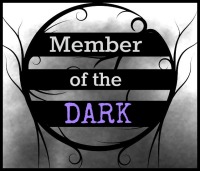Talking animals can have multiple uses depending on your story, genre, and target age. I mentioned a few days ago that some people see the inclusion of talking animals as a sign of immature tales. This is not always the case, but they do end up more often in children’s stories. Part of this might be because it is easier for children to disbelieve reality than an adult. We immediately know that a rabbit can’t tell time and worry about being late, but a child is willing to go along with it without question. Anyway, here are a few general concepts to use talking animals for:
- Define the Setting– This would be a big Disney thing where all of the animals can talk in a story. Two varieties can be found here. One is like Alice in Wonderland where a human enters the world of talking animals. They set the standard for what one can expect from the wildlife, so her adventure has a more magical feel. The other variety would be Lion King where every character is a talking animal. One can guess that humans wouldn’t be able to understand what is being said if they were there, but we’re a non-entity. All behavior and characteristics that would be human are placed on the animals like the conniving mind of Scar and the nobility of Mufasa. Yes, I know it’s Hamlet with fur and Whoopi Goldberg.
- The Villain– In other stories, the human hero has to battle an animal villain. This can include facing a dragon like Smaug, but I think Jungle Book best exemplifies it. At least the Disney movie, which is different from the book. We’re going to see a lot of Disney here, folks. Anyway, this can be a symbol of Man Vs Wild with the hero’s civilized brain being pitted against the instinct of a superior predator. Take Mowgli’s human mind away and Sher Kahan has the advantage. The trick here is to give the animal some human characteristics (cruelty, pride, etc.) while keeping their bestial essence.
- Comedy– If you want to go away from the serious stuff then there’s always comedy. Having talking animals that walk on two legs, wear clothes, and act like humans means reality has been thrown in the wood chipper. You can go full crazy as long as your story won’t be harmed by comedy. Looney Tunes uses slapstick, which is doable if it fights. I don’t see many stories utilizing the immortality and regenerative abilities of Daffy Duck, but it’s an established option. Another source of comedy with talking animals is that they don’t understand human culture. Questions, confusion, and trouble can be created through this lack of knowledge.
- Guide/Mentor– I know the Cheshire Cat is a terrible example of this. At least, I don’t remember him being much help. Still, an animal can be used in certain story types when on their home turf. They can guide heroes through dangerous areas while describing the perils. With a talking animal leading the way, you get a ‘townie’ insight to the world and the hero won’t have to go through a ‘lost’ period more than once. It also gives the writer another character to work with instead of a map, which typically has no characterization.
- Sidekick– This is the easiest one, which is why is why I’m doing it last. A talking animal makes an excellent sidekick in fiction. It can be magic, natural, or technology that gives the critter a voice. That’s up to the author because the point is to have a non-human ally helping the hero. They tend to have a big level of loyalty toward their hero and tend to count as the ‘cute’ factor too. The key to a talking animal sidekick is to not make them too human. Their flaw is that they are still animals, so they should be a source of trouble when in a city. A fierce loyalty or protectiveness can be used for misunderstandings. They don’t even have to be able to talk, but have some human characteristics like Abu the Kleptomaniac Monkey from Aladdin. Another subsection of this is the talking familiar for spellcasters.










Great tips! It’s interesting how dragons never seem to age down a book like a talking rabbit does. 🙂 Perhaps because they’re so dangerous and willing to kill? There’s nothing like an intelligent predator to liven up a story.
LikeLike
Magical creatures might get a pass because of their fictional nature. After all, centaurs and satyrs talk all the time. Horses and goats, not as much.
LikeLike
Gives me an idea to start a blog where a cat or an owl could give advises! 😉
Great tips 🙂
LikeLike
I see a bunch of blogs by dogs out there. I like the owl idea.
LikeLike
I’m not gonna start a new blog, though. One is enough to have me on my toes. Success is hard to get. 🙂
LikeLike
I agree. I’m amazed by people that control multiple blogs.
LikeLike
I’ve got Wattpad also, writing my official novel, short story series, book for Wattpad, this blog, Facebook page…
I guess, that is multi-tasking. LOL.
LikeLike
I’ve got FB, Twitter, book promotions, this blog, writing another book, and preparing the next one for publication. Wow. That sounds busy.
LikeLike
I know, right? 😀
Makes me feel awesome! As if, I’m close to success. After all, hard work doesn’t go wasted 🙂
LikeLike
I agree. Always nice to see hard work pay off. Though, the dips can get really aggravating. 😉
LikeLike
Oh! Tell me about it! 🙂
LikeLike
My first book has practically died and now amount of advertising is helping it. I think that free weekend did more bad than good.
LikeLike
Advertising is the key for indies. It’s a lot of work, isn’t it? *Sighs* But then the hard work pays off too…
LikeLike
That it does. Though, nothing beats the release of a new book. 🙂
LikeLike
Waiting for that time desperately! 😀
LikeLike